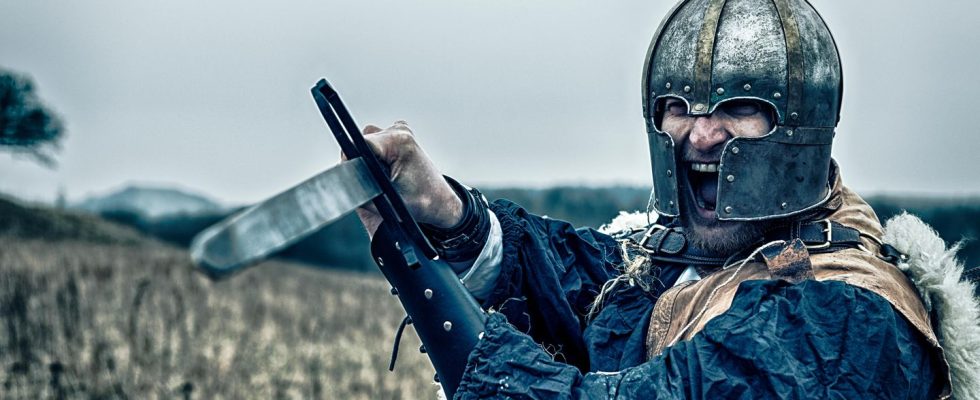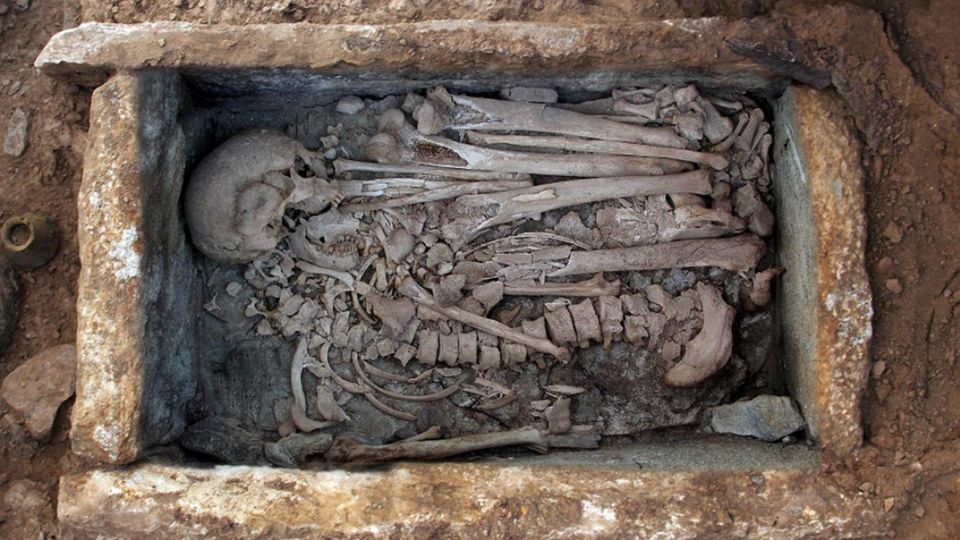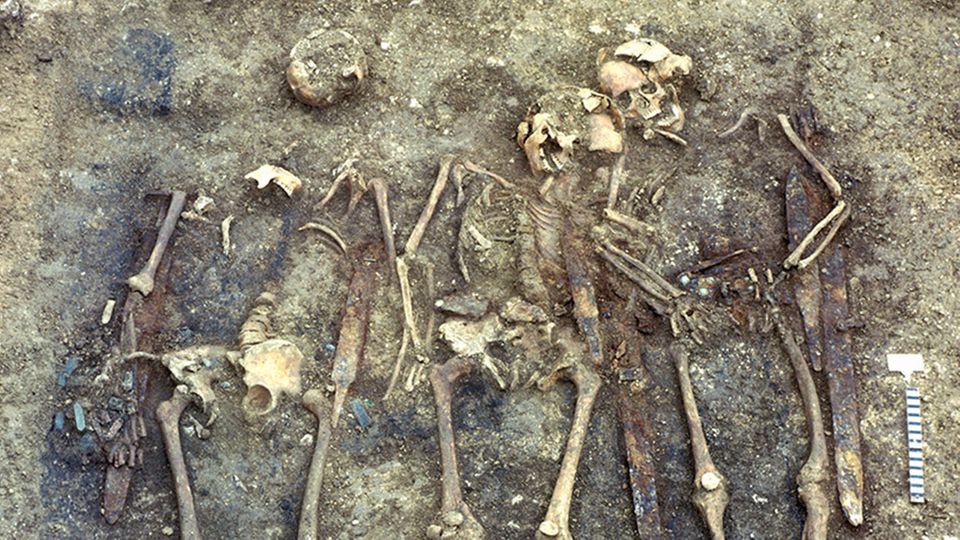A knight had to carry more than 50 kilograms of equipment in battle. Hard training was necessary to endure the strain. But it’s worth it: a great fighter like Boucicaut quickly became a rich man – if he survived.
No one has sung the battle of knights as wildly as the warrior and troubadour Bertran de Born. Translated into prose, it reads like this: “When he goes into battle, every man of good birth thinks of nothing but splitting heads and chopping off arms. It is better to die than to live in defeat. I tell you , I don’t enjoy eating or drinking or sleeping as much as when I hear the cry of ‘attack’ from all sides. And the noise of horses without riders in the shadows. Then I hear screams of ‘To help! To help!’ And I see great and small alike falling into the trenches. And the dead with splintering lances, still decorated with pennants, pierced into their sides.”
Bertran de Born, a baron from Occitania, was certainly one of the most bloodthirsty and hot-tempered men of his time, who valued little other than war and love, but you can see: life as a knight was not a pony farm.
Heavy armor, helmets, swords, axes – a knight had to be fit to survive in battle. While Hollywood films usually show a ritualized lance-jobbing in designated battle areas, even in tournaments it was wilder and more realistic. Groups of knights often fought against each other, on horseback or on foot – until no man in a group could stand anymore.
Strong physical strain on the knights
That wasn’t easy. The armor alone weighed over 30 kilograms, plus the chain mail weighed 10 kilograms. The weight of the shield, sword, dagger, mace and other equipment was also added. With a load of well over 50 kilograms, the fighter had to be able to move quickly and energetically. The fights were also not interrupted by round breaks like today in martial arts. Added to this was the physical strain caused by the blows received or parried. The armor only prevented the blade from penetrating the body. The fighter always suffered the sheer force of an ax or sword blow if he did not jump aside nimbly.
In the crush of a battle you could easily be crushed or die of heat stroke – physical fitness was essential. It was not without reason that people in the Middle Ages were of the opinion that one should learn to master horses and weapons as a child. It is known how some knights prepared for their fights: they trained like today’s athletes.
Professional athletes with weapons
Jean Froissart described how Jean le Maingre (1366-1421) prepared for battle. The knight was known and feared under the name Boucicaut. He was considered a model of knightly virtue. Boucicaut was known for his rigorous training – always wearing armor so he could support their weight and get used to the armor’s restrictions on movement. His biographer described his training:
“And he began to test himself by jumping on his horse in full armor. At other times he ran or hiked a long way on foot to train. So that he would not be out of breath and could endure long exertions. Too At other times, he would strike for a long time with an ax or a heavy battle hammer in order to be able to hold on well in the armor. So his arms and hands could withstand the blows for a long time and he trained himself to raise his arms flexibly.
In this way he trained so well that at that time no other gentleman could be found in the same physical condition. He could do a somersault in his armor except the helmet and danced dressed in his chainmail…..”
Boucicaut fought his first battle as a child. He achieved great fame in 1390. At that time he teamed up with two knight friends. The trio called on every fighter in Christianity to take on them. For 30 days, the three fought under Boucicaut’s leadership against the best knights in Europe and remained victorious.
Somersault in armor
Other rather unusual training sessions have been reported. In full armor, Boucicaut stood between two walls that were so close together that he could climb up between them if he got stuck between the walls. To increase the speed of the core, the knight selected heavy boulders, which he lifted from the ground and then threw as far as possible. He increased his power by hitting walls, floors or tables at every opportunity. He strengthened his arms by leaning a ladder diagonally against a tree. Then he stood under the ladder, grabbed the rungs above his head and pulled himself up rung by rung – in full armor, of course.
But this training was not just for fighting in war. The tournaments of the time produced a caste of professional athletes. The victors in the battle not only received great honor, but also handsome rewards. Above all, the victor’s armor and horse belonged to the loser. A strong fighter could gain great wealth in a tournament.
Not all knights were skilled fighters. However, every feudal lord had to obey the ideals of chivalry. Even unsportsmanlike and clumsy barons had to prove their courage from time to time and step into the limits of a tournament. Of course, their chances were extremely slim when they faced Boucicaut and his ilk. It was a bit like a manager who occasionally does some boxing training meeting the world champion today.
Get rich through tournament battles
One of the most dangerous fighters was William Marshal, known as Guillaume le Maréchal (1144-1219), who was considered the greatest knight of his time. His medieval biographer reports that as a young man he competed in a tournament that morning as a “poor man”. By sunset he had captured four warhorses and their corresponding armor and equipment.
Guillaume was a rich man because warhorses and armor were incredibly expensive. The other knights “now treated him much more politely than before.” By the end of his life, Guillaume had defeated over 500 knights and amassed a fortune.
Sources:
Thomas Asbridge – The greatest of all knights: and the world of the Middle Ages.
Froissart, Jean Vol. 3 1812. Les chroniques de Sire Jean Froissart
also read
– Women and strangers – the multicultural warrior families of the Middle Ages
– Immigration brutal – 4500 years ago every man in Spain was killed
– “Game of Thrones” in Sweden – Medieval massacre wiped out entire village
– In the Middle Ages, English people mutilated their dead out of fear of zombies




